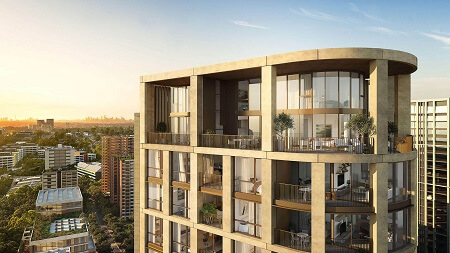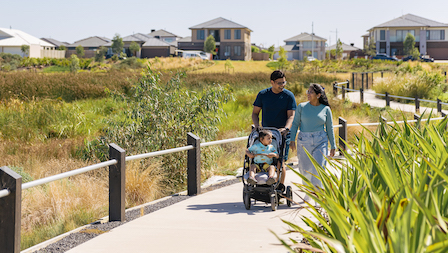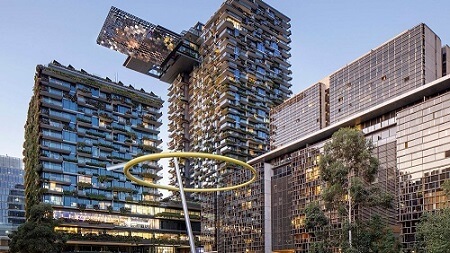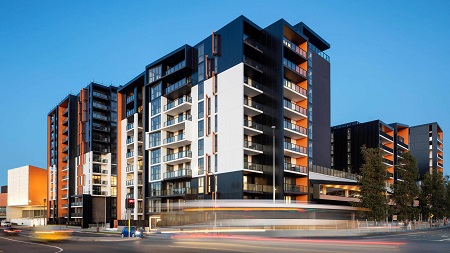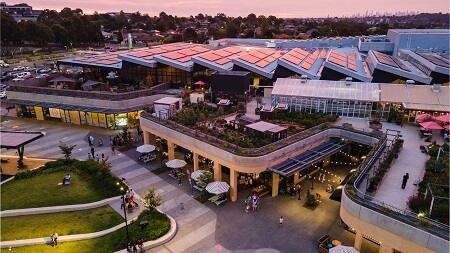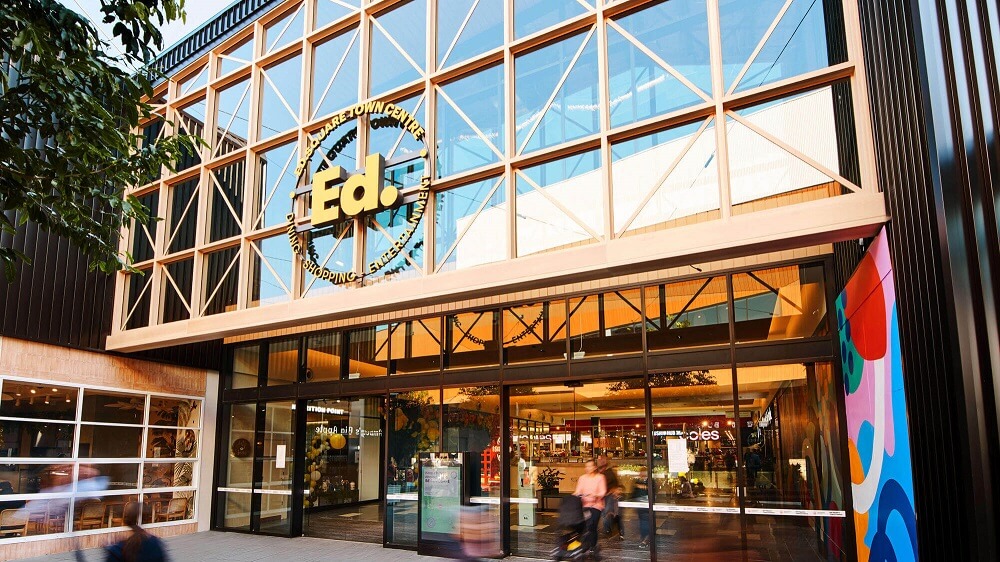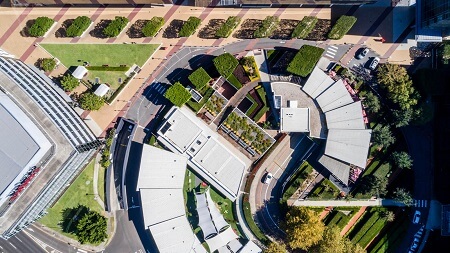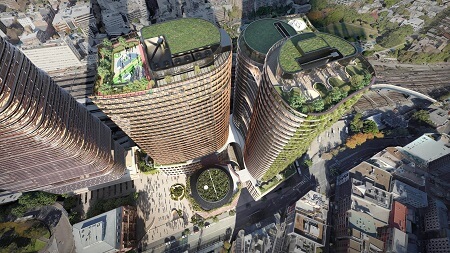Q&A Insights: 5 minutes with Brunswick & Co. Sustainability Lead Ben Gibbs
Brunswick & Co.’s Sustainability Lead, Ben Gibbs.
Tell us a little bit about WSP!
WSP is one of the world's leading professional services consulting firms. We are dedicated to our local communities and propelled by international brainpower. We are technical experts and strategic advisors including engineers, technicians, scientists, planners, surveyors and environmental specialists, as well as other design, program and construction management professionals.
We design lasting solutions in the Transport & Water, Property & Buildings, Earth & Environment, and Mining & Power sector as well as offering strategic Advisory, Engagement & Digital services. With 8,500 talented people in more than 50 offices in Australia and New Zealand, we engineer future ready projects that will help societies grow for lifetimes to come.
What is your role at WSP?
As a Director within the Sustainability and Climate Change team, my responsibility centres on leading a national cohort of sustainability and climate change experts. Together, we collaborate with clients to decarbonise projects and proactively address the impacts of climate change.
My daily focus involves leading major projects and providing strategic sustainability guidance throughout the project lifecycle, with an emphasis on achieving decarbonisation goals and advancing net-zero strategies.
What are the types of projects you work on and why?
My professional background predominantly lies in the property sector, where I’ve worked on projects across many sectors including residential, commercial, health and precincts. However, as sustainability and decarbonisation continue to gain prominence across the built environment, my work has expanded into other areas including infrastructure, water management, energy systems and broader organisational and corporate endeavours.
When did you start working with the Brunswick & Co. team?
I joined the Brunswick & Co. team in late 2020 during the very early stages of project inception. The sustainability ambitions of the project have been a key priority for the team and having been there from the beginning, it has enabled sustainability principles and initiatives to be thoroughly considered as part of the design process and has been key to enabling their implementation.
What are you hoping to achieve for the project?
My aspiration for this project is to establish a new benchmark in residential sustainable building design. While residential buildings have historically lagged behind other property sectors in terms of sustainability targets and occupant wellbeing outcomes, they are the spaces where many of us spend the majority of our time. There lies a significant opportunity not only to reduce the environmental impact of residential structures but also to enhance the overall occupant experience.
What does a Greenstar rating mean?
The Green Star rating system is internationally recognised as a standard for healthy, resilient and positive buildings and places. It provides an independent means to formally verify the environmental and social outcomes of a project. Essentially, achieving a Green Star rating signifies excellence in sustainable design and performance.
Why is this accreditation so important for new projects like B&CO?
Achieving a formal Green Star certification is a clear demonstration to all stakeholders that a project has achieved a high sustainability standard of design, construction and operation. This accreditation underscores the project’s commitment to creating environmentally responsible and socially beneficial spaces.
What are some of the sustainability features that will be incorporated into the design?
As part of the sustainability vision for the project, which broadly aligns with the formal Green Star targets for the project, the following non-exhaustive list of sustainability features have been incorporated:
- Passive Design Principles: The focus includes high-performance glazing, sun shading elements, and natural ventilation—leveraging ceiling fans to reduce reliance on air conditioning.
- All-Electric Design: The building operates on 100% renewable electricity, including a rooftop photovoltaic system.
- Energy Efficiency: The lighting, air conditioning, and appliances have been designed to minimise energy consumption.
- Thoughtful Landscaping: Water usage is reduced through the selection of native species, and captured rainwater is used for irrigation.
- Bicycle Storage: Ample bicycle storage is available for both building occupants and staff.
- Communal Amenities: The design includes communal amenities such as a gym, fitness studio and co-working area.
- Embodied Carbon Reductions: Considered selection of low-carbon concrete and steel materials.
- Contributing to Fraser Property Reconciliation Action Plan: This is an ongoing consideration with the commitment currently including public art installations and creating employment opportunities.
Do you have a favourite sustainability feature in this design?
Buildings are currently responsible for approximately 37% of global carbon emissions. Achieving an all-electric design through the replacement of gas boilers with heat pumps for water heating and transitioning gas cooktops to induction is a great outcome.
Utilising renewable electricity to power the building results in significant carbon emission reductions over the lifetime of the building. It’s hard to overlook a feature that has that kind of emission reduction impact!
Are there any unique elements or special considerations for this project, in comparison to other projects you have previously worked on with developers?
The Build to Rent nature of this project makes it particularly interesting as Frasers Property is both the developer and building operator. Therefore, it has been a priority to implement not only sustainable features that contribute to the design and construction of the project but also its long-term operation.
Examples of these features include the reduction of water and energy consumption resulting in reduced ongoing bill costs and ensuring the design considers future expected climate impacts, such as rising temperatures, to ensure the building operates as designed throughout its lifecycle.
How have you found working with Frasers Property so far?
Frasers Property is a leader in the property industry when it comes to sustainability credentials and targets for its projects. It’s been immensely rewarding collaborating with a team who have put the sustainability outcomes as a clear priority and given the project team the time and support needed to implement some truly leading initiatives.
What are you most looking forward to once the project will be complete?
I’m looking forward to seeing how the occupants interact and enjoy the building including its many amenities and communal spaces. The combination of sustainability initiatives plus the stunning architectural design of the project will set a new benchmark for residential projects and I’m hopeful that other residential projects will draw inspiration from Brunswick & Co’s leadership.
Do you have anything else to add?
I’ve thoroughly enjoyed my involvement in the project journey so far. The team is full of inspiring, dedicated professionals who always actively engage in the sustainability ambitions of the project, which has resulted in great outcomes that otherwise might not have been possible. I’m looking forward to seeing the project come to life through the construction stage before opening to its first occupants.
See more articles on


